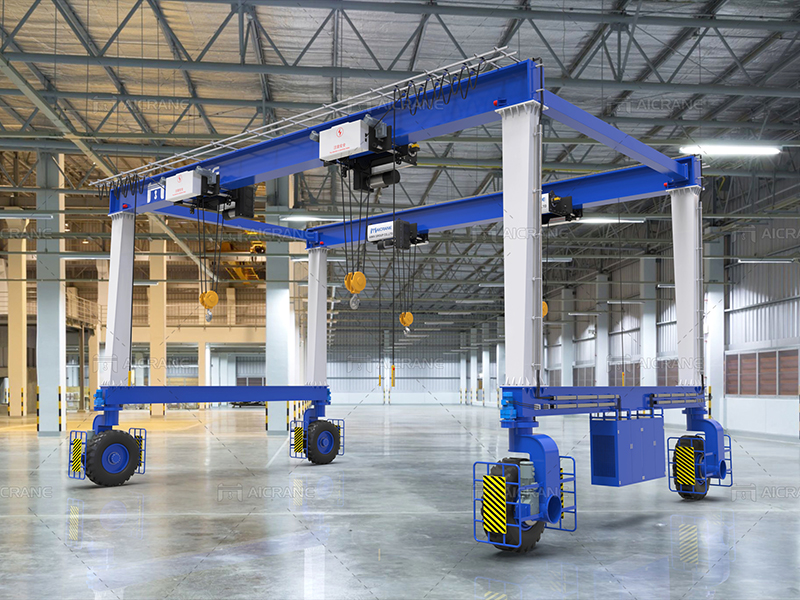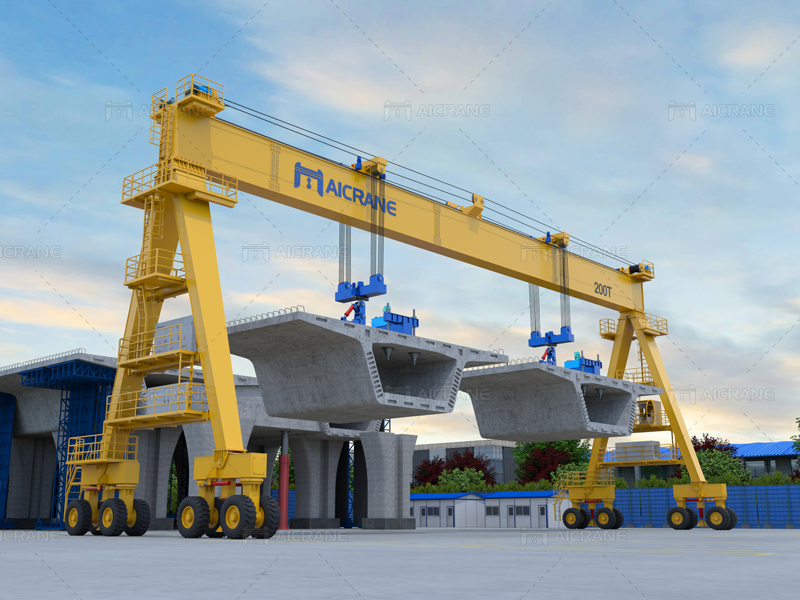Indonesia, with its sprawling archipelago and growing economy, relies heavily on a robust infrastructure network to facilitate the efficient movement of goods and foster economic development. Among the various components that contribute to the nation’s infrastructure, gantry cranes emerge as unsung heroes, playing a pivotal role in enhancing logistics and transportation efficiency. This article delves into the importance of gantry cranes in the context of Indonesia’s infrastructure, exploring their diverse applications and impact on the nation’s economic landscape.

I. Gantry Cranes: A Cornerstone of Indonesian Infrastructure
Indonesia’s unique geographical makeup poses logistical challenges that demand innovative solutions. Gantry cranes in Indonesia, characterized by their adaptability and versatility, have become a cornerstone of the nation’s infrastructure, particularly in key sectors such as maritime and rail transportation.
A. Container Handling in Seaports:
Indonesian seaports serve as crucial gateways for international trade, and efficient container handling is paramount for the smooth flow of goods. Gantry cranes, especially rail-mounted gantry cranes (RMGs) and rubber-tired gantry cranes (RTGs), dominate port landscapes, seamlessly transferring standardized shipping containers between ships and other modes of transport.
The ability of gantry cranes to lift and move heavy containers with precision contributes significantly to reducing turnaround times in ports. This efficiency is crucial not only for meeting the demands of a growing economy but also for positioning Indonesia as a competitive player in the global shipping industry.
B. Railway Yards and Cargo Transfer:
Inland transportation is equally vital for Indonesia’s economic development, and gantry cranes are instrumental in optimizing railway yards. These cranes facilitate the loading and unloading of goods onto trains, ensuring a streamlined and efficient rail network.
The rail-mounted nature of gantry cranes allows them to traverse railway tracks, reaching different points of the network. This versatility is crucial for handling diverse cargo types, including bulk goods and heavy machinery. By enhancing the efficiency of railway operations, gantry cranes contribute to a more sustainable and cost-effective transportation system.
II. Technological Advancements in Gantry Cranes
As Indonesia strives to modernize its infrastructure, technological advancements in gantry cranes have played a pivotal role in elevating their efficiency and safety standards.
A. Automation and Control Systems:
Modern gantry cranes are increasingly equipped with advanced automation and computer control systems. This automation enhances the precision and speed of crane operations, minimizing the risk of human error. Automated gantry cranes contribute to a safer working environment and increased operational efficiency, aligning with Indonesia’s commitment to adopting cutting-edge technologies.
B. Sensor Integration and Safety Measures:
Gantry cranes are now fitted with an array of sensors and cameras that provide real-time data on load conditions, weather, and operational parameters. These sensors contribute to enhanced safety measures, ensuring that crane operators have accurate information to make informed decisions during lifting operations. The integration of safety features is crucial for preventing accidents and minimizing downtime in busy transportation hubs.

III. Challenges and Solutions
While gantry cranes have proven indispensable in Indonesia’s infrastructure landscape, they are not without challenges. Addressing these challenges is essential for maximizing the benefits of gantry cranes in the long run.
A. Environmental Concerns:
The environmental impact of gantry crane operations, particularly in densely populated areas, has raised concerns. Emissions from heavy machinery and energy consumption are areas that require attention. Implementing eco-friendly technologies and exploring alternative energy sources can mitigate the environmental footprint of gantry crane operations, aligning with Indonesia’s commitment to sustainable development.
B. Infrastructure Limitations:
Indonesia’s diverse terrain and vast archipelago present infrastructure limitations, particularly in remote areas. Gantry cranes can face challenges in regions with underdeveloped transport networks or inadequate facilities. Strategic planning and targeted investments in infrastructure development are crucial to expanding the reach and effectiveness of gantry cranes across the nation.
C. Operator Training and Skill Development:
The efficient operation of gantry cranes requires skilled and well-trained operators. Investing in training programs and skill development for crane operators ensures not only the safe and effective use of the equipment but also contributes to the professional growth of the workforce. Collaborative efforts between the public and private sectors can address this challenge and foster a skilled workforce capable of managing gantry crane operations effectively.
IV. Case Studies and Best Practices
Examining successful case studies and best practices provides valuable insights into how gantry cranes have been effectively integrated into Indonesia’s infrastructure.
A. Port of Tanjung Priok:
As Indonesia’s busiest port, Tanjung Priok has successfully implemented gantry cranes to handle the increasing volume of containerized cargo. The strategic placement of gantry cranes along the quayside has optimized container handling processes, reducing vessel turnaround times and enhancing the port’s overall efficiency.
B. Railway Yard Optimization in Surabaya:
Surabaya, a key hub for railway transportation, has implemented container gantry cranes in its railway yards to facilitate the efficient transfer of goods between trains. This has not only streamlined cargo operations but has also contributed to the reduction of road congestion by promoting rail transportation.
C. Automation in Jakarta’s Intermodal Terminal:
Jakarta’s intermodal terminal has embraced automation in gantry crane operations, leading to increased efficiency and reliability. Automated systems ensure precise container positioning, minimizing delays and maximizing throughput in one of Indonesia’s crucial transportation nodes.
V. Future Trends and Outlook
Looking ahead, the role of gantry cranes in Indonesia’s infrastructure is poised to evolve in response to emerging trends and challenges.
A. Integration of Smart Technologies:
The integration of smart technologies, such as Internet of Things (IoT) devices and artificial intelligence, is expected to further enhance the capabilities of gantry cranes. Real-time data analytics and predictive maintenance systems will contribute to proactive decision-making, reducing downtime and optimizing operational efficiency.
B. Renewable Energy Adoption:
To address environmental concerns, the adoption of renewable energy sources for powering gantry cranes is a potential future trend. Solar and wind energy solutions can be explored to reduce the carbon footprint of crane operations, aligning with Indonesia’s commitment to sustainable development.
C. Expansion of Intermodal Connectivity:
Gantry cranes will play a crucial role in the ongoing efforts to expand intermodal connectivity in Indonesia. The integration of different modes of transportation, including railways, highways, and maritime routes, will be essential for creating a seamless and efficient logistics network.
VI. Conclusion
In conclusion, the importance of gantry cranes in the context of Indonesia’s infrastructure cannot be overstated. These versatile lifting machines contribute significantly to the efficiency of ports, railway yards, and intermodal terminals, driving economic development and facilitating international trade. As Indonesia continues to invest in modernizing its infrastructure, gantry cranes will remain at the forefront, adapting to technological advancements and playing a pivotal role in shaping the nation’s transportation landscape for years to come. To learn more, visit https://steelmillcranes.com/